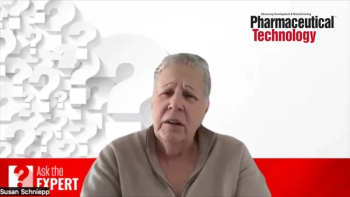
- Pharmaceutical Technology-04-02-2008
- Volume 32
- Issue 4
Coming Down the Pike: Bispecific mABs
Antibodies are highly specific molecules that can be tailored to recognize almost any stretch of peptide that nature can conjure: a feature that has been exploited for years now to produce therapeutic antibodies.
Antibodies are highly specific molecules that can be tailored to recognize almost any stretch of peptide that nature can conjure: a feature that has been exploited for years now to produce therapeutic antibodies.
BiTE antibodies may be able to fight cancer cells such as this one.(PHOTO: GEOSTOCK/GETTY IMAGES)
In the most common scenario, an antibody is created that homes in on a particular protein—generally one abnormally expressed to produce a disease condition—binds to it, and blocks its activity. The anti-breast cancer drug Herceptin functions this way, for example.
But within the past 10 years, scientists have been experimenting with antibodies that recognize two peptide sequences—often on two different cell types—at once. These so-called bispecific monoclonal antibodies (Bi-mAbs) are often engineered to recognize a sequence on cytotoxic, or "killer" T-cells as well as a sequence on tumor cells, the idea being that the Bi-mAb literally links together a killer cell with its tumor-cell target.
Writing in Drugs of the Future 2008, scientists at Micromet Inc. (Bethesda, MD) say that most of these drugs have not been "suitable for formal pharmaceutical development, generally due to issues of production and lack of potency." And speaking at the Biotechnology Industry's Organization CEO and Investors Conference this February, Micromet CEO Christian Itin revealed the company's next-generation Bi-mAbs, which they call BiTE antibodies.
BiTE antibodies combine only the variable domains of antibodies and therefore are approximately one-third the size of conventional antibodies. Scientists report that BiTE antibodies have been extremely successful at inducing the normal "killer" T-cell response in a highly specific manner against tumor cells, while skirting many of the usual side effects of mAb therapies. The company has its first such BiTE antibody in Phase I trials for non-Hodgkins lymphoma and has several more against various tumor types in its development pipeline.
References
1. P. A. Baeuerle et al., "BiTE: A New Class of Antibodies that Recruit T-Cells," Drugs of the Future 2008, 33 (2), (2008).
2. C. Renner et al.," Cure of Xenografted Human Tumors by Sispecific Monoclonal Antibodies and Human T Cells," Science 264, 833–835 (1994).
3. M. Brennan et al., "Preparation of Bispecific Antibodies by Chemical Recombination of Monoclonal Immunoglobulin G1 Fragments," Science 229, 81–83 (1985).
Articles in this issue
over 17 years ago
Suppositories: The Incomplete Storyover 17 years ago
A Transformation in the Makingover 17 years ago
Vapors, Venison, and Videosover 17 years ago
Inside IPEC-EUROPE: Pharmaceutical Excipients—The View from the EUover 17 years ago
Measuring Excipient-Market Growthover 17 years ago
Report From: China, May 2008over 17 years ago
Weak Link in the Pharmaceutical Supply Chainover 17 years ago
Spectrophotometric Determination of Leadover 17 years ago
Message in a Bottleover 17 years ago
Tracking the Potential of ExcipientsNewsletter
Get the essential updates shaping the future of pharma manufacturing and compliance—subscribe today to Pharmaceutical Technology and never miss a breakthrough.




